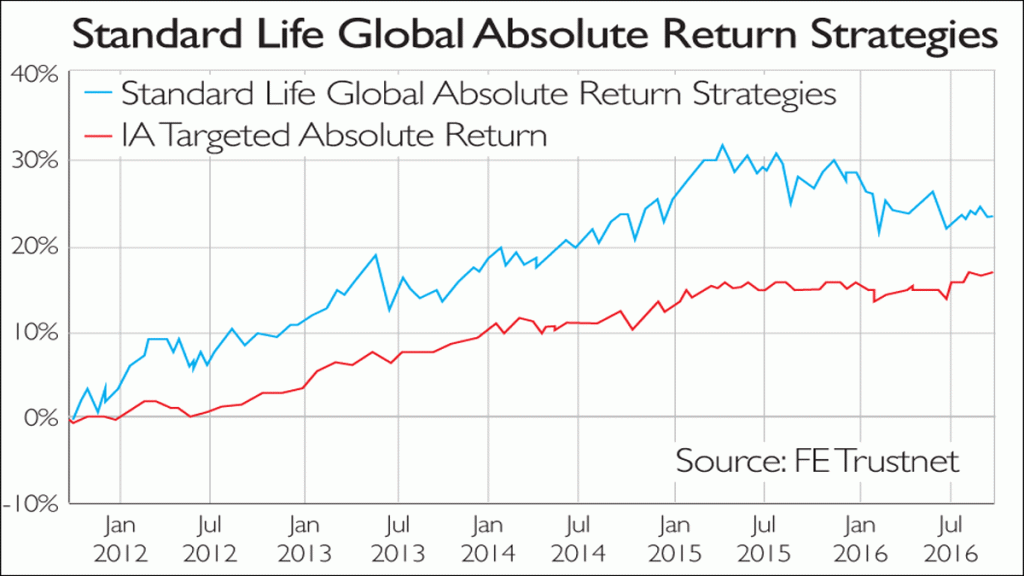
Despite all the economic, political and market concerns, the last year has been pretty good for investors. In the 12 months to the end of July, UK equities returned 5%, global equities 18%, ten-year gilts 14% and ten-year US Treasuries 27%, all in sterling terms. A UK investor with a diversified portfolio should have returned more than 10%.
Yet in that period, Standard Life’s Global Absolute Return Strategies (GARS), a £26bn fund, lost 5.3%. The average fund in its multi-strategy peer group made just 0.2%. What has gone wrong with a fund sector widely regarded as the answer to the prayers of risk-averse investors?
To answer that, we need to go back to late 2008. Global equities had lost 50% of their value, dragging returns of even risk-averse diversified funds well into negative territory. Yet the hedge-fund industry had shown that it was possible to profit from the woes and investment constraints of conventional funds with “macro” trading funds, usually managed by former whizz-kids from investment banks. Their charges – normally a 2% annual fee and 20% of all gains – were stiff, but maybe their strategies could be replicated by lesser mortals at lower cost.
Hence the launch of GARS. Early returns were good and the money flowed in, much of it from pension funds, whose trustees and consultants are more worried about avoiding short-term losses than maximising long-term gains. Competitors jumped into the space with similar funds targeting returns of 5% over interest rates or inflation per annum. But a couple of disappointing years seem to have vindicated sceptics such as Brian Tora of JM Finn, who used to quip that absolute-return funds should be renamed “absolutely no return funds”.
Part of the problem is that the investment climate for macro funds has become more difficult with even the hedge funds struggling. A larger pool of money is chasing investment opportunities that are no more numerous than ten years ago. If the A teams at hedge funds, with their huge financial incentives, cannot continue to provide the returns of their glory days, the B teams at the institutional fund managers have little hope. But how can any fund generate returns of 5% over inflation or interest rates without taking risks?
This is the long-term expectation for an equity portfolio subject to full market volatility. Reducing that volatility must reduce long-term returns. Unless the managers are investment masters of the universe, these targets are in cloud-cuckoo land.
The recent fall in sterling should have bailed out GARS and its peers, since non-UK assets jumped in value by at least 10% in sterling terms. That it didn’t boost their performance suggests that all the funds hedged their currency exposure. Hedging is supposed to reduce risk but focusing currency exposure entirely on sterling arguably does the opposite.
Julian Baring, the late “gold guru” of the City, once quipped that he didn’t like hedges because behind every hedge there was a ditch and ditches were damp miserable places. In GARS’s case, hedging appears to have ditched performance, with 3% lost in June.
The managers of GARS blame poor performance on “irrationality and short termism”, but say they are poised to reverse their bad run. It is hard to see how that will happen with equity exposure of just 12% and bond yields at multi-century lows. Maybe markets will drop sharply, giving them a perfect opportunity to buy into equities.
But as the legendary investor Jesse Livermore said: “If you have to rely on hope in an investment, it’s time to get out.” Investors should avoid any fund with “multi-asset”, “multi-strategy” or “absolute return” in the title. These managers are Jacks-of-all-trades and masters of none.